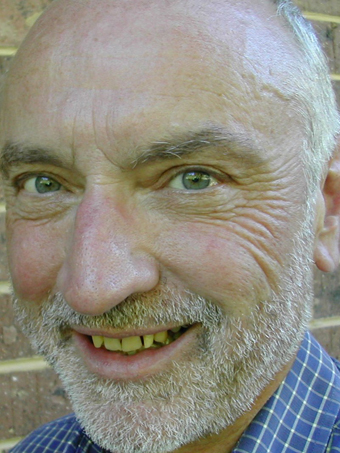Contributor profile: Chris Reid

Chris Reid
photo courtesy of the author
Chris Reid
Bio
As an undergraduate in South Australia, I studied Political Science and History and have made a 30-year career in educational administration — “herding cats”. More recently I completed a masters degree in art history and had a brief taste of teaching in that field. After 5.00pm, I’ve always been an arts addict. I write about both art and music but I’m neither an artist nor a musician. My life is split between three worlds — art, music and education. Every interstate or overseas trip is a cultural (as well as socio-political) excursion.
Exposé
I began writing about art in 1992 for Adelaide-based visual art magazine Broadsheet, published by the Contemporary Art Centre of SA, and regularly wrote exhibition reviews and artists’ profiles for Broadsheet for many years. From the outset, I always tried to write from the position of the engaged viewer, rather than the expert, and to re-present the spectacle to the reader. I also regularly write catalogue essays for artists and in the 1990s contributed to other art magazines such as Art Monthly Australia.
I was first invited to write for Real Time in 1995—a piece on an Adelaide contemporary music ensemble—and, for Real Time, I have written much more about music than art. In covering musical performances or in writing CD reviews, I try to write as an engaged listener.
Since the art and music I cover is typically new and often groundbreaking, I try to convey the concept to readers in a way that allows them to get a feel for the work, form their own view and take from it whatever inspiration they can. I try to leave my tastes and assumptions at home and act as an informative conduit rather than an evaluative judge. In a globalising and rapidly changing art/music world, it’s important to write sympathetically as well as analytically. I immerse myself in the work to find its poetics, its maker’s spirit, and often feel I’m entering a new world of ideas each time. I feel privileged to be able to write about the work that I do, given the effort that artists, curators, composers and musicians put into it and the impact it can have on audiences. The work might only be seen or heard by a few people, so the text that describes it must document it well to ensure that it fulfils its potential and endures.
And writing keeps me sane.
Recent articles for realtime
earbash decibel: disintegration: mutation
earbash toplogy: difference engine
RT101 sa art: present tense: cacsa contemporary 2010: the new new
RT100 intimate warnings: vocal thoughts, cacsa
RT93 music like speech: elision in session, melbourne
RT93 music that needs to be seen: soundstream adelaide new music festival
RealTime issue #103 June-July 2011 pg. web






